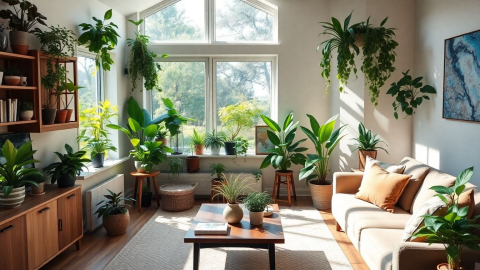Tropical Interior Design: Creating Paradise Within Your Home
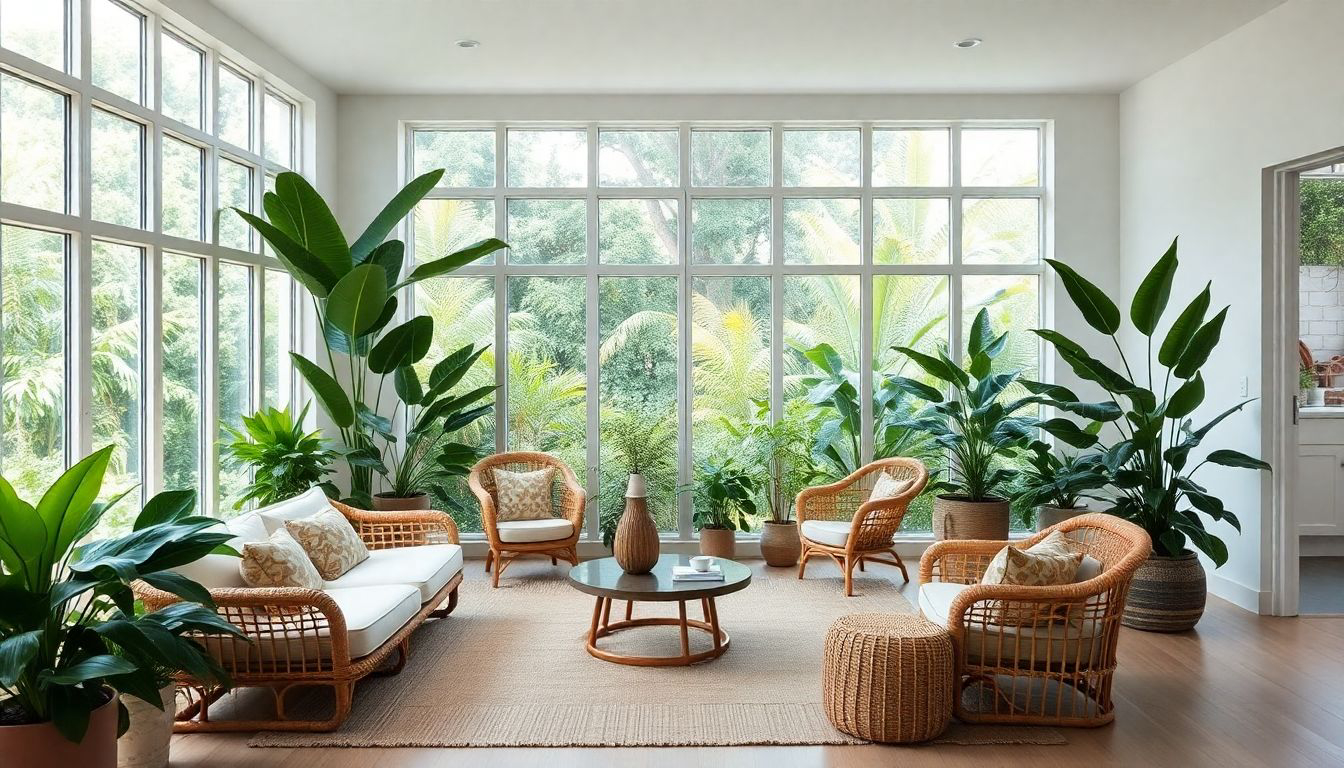
Imagine stepping into your living room and being instantly transported to a lush, vibrant paradise. The air feels fresher, the colors more vivid, and the atmosphere exudes a sense of calm and relaxation. This is the magic of tropical interior design – a style that brings the essence of exotic locales into your everyday living spaces. From the gentle sway of palm fronds to the rich textures of natural materials, tropical design offers a unique opportunity to create a personal oasis that captivates the senses and soothes the soul.
In this comprehensive guide, we'll explore the art of tropical interior design, uncovering its key elements, innovative approaches, and the transformative power it holds for your home. Whether you're looking to completely revamp your space or simply add a touch of tropical flair, this journey will inspire you to embrace the beauty and serenity of the tropics in your own unique way.
The Essence of Tropical Design
At its core, tropical interior design is about creating a harmonious dialogue between nature and the built environment. It's a celebration of lush greenery, vibrant colors, and natural materials that evoke the feeling of a sun-soaked paradise. According to Bruno Stagno, a renowned architect from Costa Rica, tropical design goes beyond mere aesthetics: "It's about capturing the content of experiential associations and contemplating environmental and human contingencies."
This philosophy is evident in the way tropical design incorporates elements such as:
- Abundant Greenery: Large-leafed plants, palm trees, and other tropical flora are essential components, bringing life and freshness to indoor spaces.
- Natural Materials: Bamboo, rattan, jute, and exotic woods like teak are commonly used to create furniture and accents that reflect the organic beauty of tropical environments.
- Vibrant Color Palettes: Inspired by the natural world, tropical design often features rich greens, ocean blues, sunset oranges, and vivid floral hues.
- Open, Airy Spaces: The tropical style emphasizes a seamless connection between indoors and outdoors, often through large windows, sliding doors, and indoor courtyards.
Bringing the Tropics Home: Key Design Elements
1. Lush Plant Life
One of the most distinctive features of tropical interior design is the abundant use of plants. As noted by Nigel Colborn, "No tropical interior theme is complete without inviting the outside in." Consider incorporating:
- Large, statement plants like bird of paradise, banana trees, or monstera deliciosa
- Hanging plants to create visual interest at different levels
- A mix of real and high-quality faux plants for low-maintenance areas
2. Natural Textures and Materials
To create an authentic tropical feel, embrace natural materials and textures throughout your space:
- Rattan or bamboo furniture for a light, airy look
- Jute rugs or sisal carpeting for a natural floor covering
- Wooden accents, such as driftwood art or carved figurines
3. Vibrant Colors and Patterns
While tropical design often incorporates neutral backgrounds, it's the pops of color that bring the style to life:
- Use bold, leafy prints on accent walls or textiles
- Incorporate vibrant throw pillows, artwork, or accessories in tropical hues
- Consider a feature wall with tropical-themed wallpaper for maximum impact
4. Light and Airiness
Tropical design is all about creating a sense of openness and connection to nature:
- Maximize natural light with sheer curtains or plantation shutters
- Use ceiling fans to improve air circulation and add a tropical touch
- Consider installing skylights or light wells to bring more sunshine indoors
Innovative Approaches to Tropical Design
While traditional tropical design elements remain popular, contemporary architects and designers are finding innovative ways to interpret the style:
Tropical Modernism
This approach combines the clean lines and minimalist aesthetic of modernism with tropical elements. As seen in projects by architects like Geoffrey Bawa, tropical modernism creates a harmonious blend of indoor and outdoor spaces, often featuring:
- Exposed concrete structures softened by lush vegetation
- Large, overhanging roofs for shade and rain protection
- Seamless transitions between interior and exterior spaces
Eco-Friendly Tropical Design
With sustainability becoming increasingly important, many designers are focusing on eco-friendly approaches to tropical interiors:
- Using reclaimed or sustainably sourced wood for furniture and accents
- Incorporating energy-efficient lighting and cooling systems
- Designing spaces that maximize natural ventilation to reduce reliance on air conditioning
Biophilic Design in the Tropics
Biophilic design, which seeks to connect building occupants more closely to nature, aligns perfectly with tropical interior principles. This approach might include:
- Living walls or vertical gardens to maximize green space in urban environments
- Water features that mimic natural streams or waterfalls
- Use of natural light and views to create a sense of expansiveness
Cultural Influences on Tropical Design
It's important to note that tropical design isn't a one-size-fits-all approach. Different regions within the tropical belt have unique cultural influences that shape their architectural and design traditions. For example:
- Balinese Design: Often features intricate wood carvings, stone sculptures, and a strong connection to spiritual elements.
- Caribbean Style: Incorporates bright, bold colors inspired by the vibrant culture and landscapes of the islands.
- Hawaiian Design: Blends Polynesian influences with a laid-back, beachy aesthetic.
By understanding and respecting these cultural nuances, you can create a tropical-inspired space that feels authentic and meaningful.
Practical Tips for Implementing Tropical Design
If you're ready to bring the tropics into your home, here are some practical tips to get started:
- Start Small: If a full tropical makeover feels overwhelming, begin with small accents like tropical print throw pillows or a statement plant.
2. Focus on Texture: Incorporate natural textures through woven baskets, grass cloth wallpaper, or bamboo blinds.
- Create a Focal Point: Use a large-scale tropical print wallpaper or a statement piece of furniture as a starting point for your design.
4. Layer Lighting: Use a mix of ambient, task, and accent lighting to create a warm, inviting atmosphere reminiscent of tropical sunsets.
- Don't Forget the Outdoors: Extend your tropical theme to outdoor spaces like patios or balconies for a cohesive indoor-outdoor experience.
The Future of Tropical Design
As we look to the future, tropical interior design is likely to evolve in response to global challenges and changing lifestyles:
- Climate Adaptation: With climate change affecting tropical regions, design solutions that prioritize resilience and sustainability will become increasingly important.
- Technology Integration: Smart home technologies that enhance comfort and efficiency while maintaining a tropical aesthetic will likely gain popularity.
- Urban Tropical: As urbanization continues, we may see more creative solutions for bringing tropical elements into smaller, city-dwelling spaces.
Conclusion
Tropical interior design offers more than just a stylistic choice; it's an opportunity to create a personal sanctuary that nurtures well-being and connects us to the natural world. By embracing the lush beauty, vibrant colors, and natural materials of the tropics, we can transform our living spaces into havens of tranquility and joy.
Whether you're drawn to the bold patterns of tropical modernism or the eco-friendly approach of biophilic design, there's a tropical style that can work for your home. Remember, the key is to create a space that feels authentic to you – one that captures the essence of tropical living while reflecting your personal taste and lifestyle.
So go ahead, let your imagination run wild, and start your journey to creating your very own tropical paradise at home. The result will be a space that not only looks beautiful but also feels like a breath of fresh, tropical air every time you step through the door.
FAQ
1. How can I incorporate tropical design in a small space?
Even in compact living areas, you can embrace tropical design with smart choices. Focus on key elements like a statement tropical print wallpaper on one wall, or a large-leafed plant in a corner. Use mirrors to reflect light and create the illusion of more space. Opt for multifunctional furniture pieces in natural materials like rattan or bamboo. Incorporate tropical colors through accessories like throw pillows or artwork. Remember, in small spaces, less is often more – a few well-chosen tropical elements can create a big impact without overwhelming the room.
2. What are some low-maintenance tropical plants for interiors?
For those who love the tropical look but worry about plant care, there are several low-maintenance options. Snake plants (Sansevieria) are hardy and thrive in various light conditions. ZZ plants (Zamioculcas zamiifolia) are drought-tolerant and adapt well to indoor environments. Pothos plants are fast-growing and can tolerate low light. For a more dramatic look, consider a rubber plant (Ficus elastica) or a parlor palm (Chamaedorea elegans). These plants not only add a tropical touch but also help purify the air, making them perfect for creating a healthy, tropical-inspired space.
3. How can I balance tropical design with a modern aesthetic?
Blending tropical and modern design styles can create a sophisticated, contemporary look. Start with a neutral base of whites, grays, or beiges for walls and larger furniture pieces. Incorporate tropical elements through accents like bold leafy prints on throw pillows or artwork. Use natural materials like wood or rattan in sleek, modern shapes for furniture. Add a few statement tropical plants in minimalist planters. The key is to maintain clean lines and a sense of spaciousness while introducing tropical elements in a controlled, curated manner.
4. What are some budget-friendly ways to achieve a tropical look?
Creating a tropical-inspired space doesn't have to break the bank. Start by incorporating tropical plants – even a few strategically placed plants can transform a room. Use tropical print fabrics for curtains or throw pillows, which you can often find at affordable prices. Paint an accent wall in a vibrant tropical hue. Shop second-hand for rattan or bamboo furniture pieces. DIY some tropical-themed artwork or framed botanical prints. Remember, tropical style is about creating a feeling – with creativity and smart choices, you can achieve this look on any budget.
5. How can I create a tropical-inspired outdoor space?
Extending tropical design to outdoor areas can create a cohesive indoor-outdoor living experience. Start by choosing outdoor furniture in natural materials like teak or rattan. Add lush, tropical plants in various sizes – think palm trees, bird of paradise, or banana plants. Use outdoor rugs with tropical prints to define seating areas. Incorporate water features like a small fountain for a soothing, tropical ambiance. String lights or lanterns can create a magical atmosphere for evening entertaining. Don't forget comfortable seating with plush cushions in tropical prints to complete the relaxed, paradise-like feel.
Further Reading and Resources
- Tropical Houses: Creating a Dialogue Between Nature and the Built Environment
- The Tropical Architecture of Monsoon Asia
- Design Guidelines for Contemporary Tropical Architecture
- Tropical House Design with Interior Courtyard
- Get the jungle look! Take inspiration from the Tropics to achieve lush, vibrant borders
These resources offer deeper insights into tropical architecture, design principles, and practical applications to help you further explore and implement tropical interior design in your own space.
More Articles
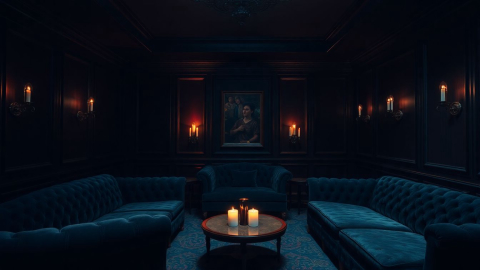
The Dark Side of Design: A Satirical Journey into the Abyss of Interior Decor
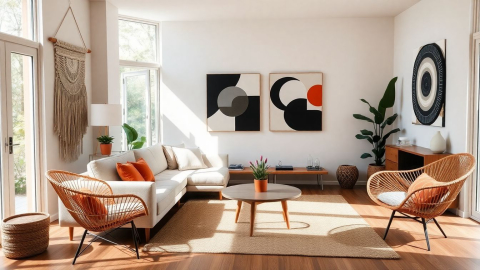
70s Interior Design: A Groovy Revival for Modern Homes
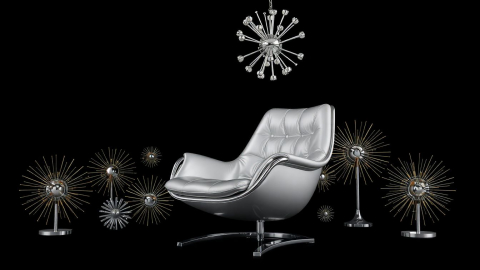
Space Age Interior Design: Where Retrofuturism Meets Domestic Bliss
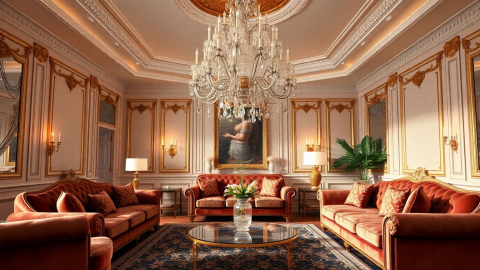
The Art of Glamorous Interior Design: Creating Luxurious Spaces That Captivate
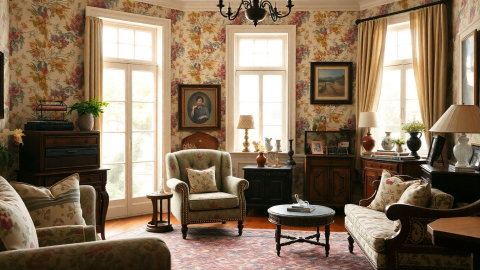
Grandmillennial Style: When Granny Chic Meets Millennial Sass
